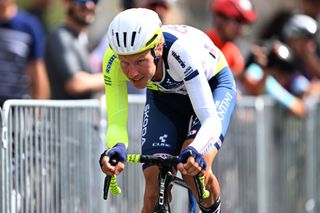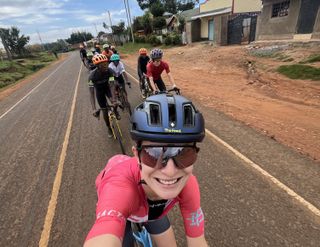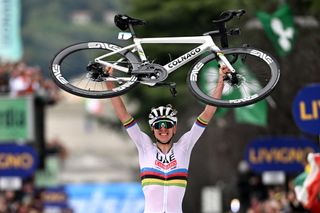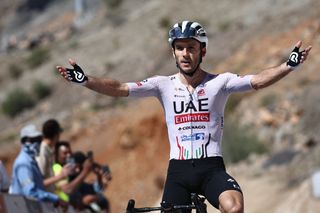Tour de la Provence - preview
Alaphilippe again the headline act in Provence while Sosa and Quintana also return
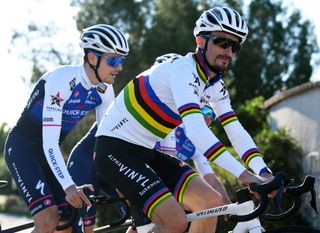
At times last spring, Julian Alaphilippe seemed to ride as though every race in the rainbow jersey might be his last, as though no effort could be spared. The Tour de la Provence was a case in point, as he flung himself onto the offensive on the opening stage and then, after being caught in the finale, somehow conjured up the strength to help tee up teammate Davide Ballerini for stage victory in the sprint. He finished the event in second place overall after battling to follow Egan Bernal and Ivan Sosa up Mont Ventoux.
“It made me make some mistakes sometimes, through my impatience to win, by wanting to show the jersey all the time, to honour it, to make it shine as best I could,” Alaphilippe confessed in September as he reflected on his first season in the rainbow bands.
The inference was that Alaphilippe would carry the world title a little more lightly in 2022, picking and choosing his battles rather than straining to live up to his billing at every available opportunity. He has already, perhaps wisely, scaled back his racing programme, eschewing the cobbled Classics to focus squarely on the Ardennes, but the QuickStep-AlphaVinyl rider will, of course, still be the marquee name when he starts his 2022 season at the Tour de la Provence on Thursday.
The four-day race, now established as a fixture on the early-season calendar after the maiden edition in 2016, provides something for everybody, and also offers an all-rounder like Alaphilippe an early chance to run through his range.
The race begins with a 7.1km prologue in Berre l'Étang before a flat road stage that should offer an ironclad opportunity for the sprinters. The fare becomes hillier across the weekend. First comes a day for puncheurs to Manosque, with an uphill run to the line, before Tour de la Provence concludes with a stiff summit finish on the category 1 Montagne de la Lure (17km with an average gradient of 6 per cent), previously seen at Paris-Nice when Alberto Contador (2009) and Richie Porte (2013) emerged victorious.
The contenders
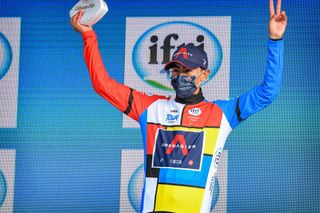
Alaphilippe has the versatility to be prominent every day on a route like this, but with Liège-Bastogne-Liège still over ten weeks away, he also has time to feel his way into the season. It will be fascinating to observe his approach.
His QuickStep-AlphaVinyl team will be without Tour of Flanders winner Kasper Asgreen after his positive test for COVID-19, but Ballerini will seek to replicate his stage wins of last year and new arrival Ilan Van Wilder will also be keen to make an impression.
Another new signing will be leading the line for Groupama-FDJ. Michael Storer is the third man in the team’s Tour de France triumvirate, and in the absence of Thibaut Pinot and David Gaudu, he will head the team’s challenge in the south of France. The summit finish at Montagne de Lure will be his first test of the new campaign.
While Storer embarks on a new beginning at Groupama-FDJ, Nairo Quintana is seeking to replicate past performances for Arkéa-Samsic. The Colombian enjoyed a sparkling run of form in his opening weeks with the Breton team in 2020, a sequence that began with overall victory at the Tour de la Provence. After a subdued 2021, Quintana returns to Provence looking to reassert himself, though it remains to be seen how his recent recovery from COVID-19 will impact on his early-season prospects.
The Tour de la Provence will also provide Richard Carapaz (Ineos Grenadiers) an immediate chance to assess his recovery from the crash that prematurely ended his outing at Étoile de Bessèges. The Ecuadorian caught the eye with his comfort in the echelons on the opening day there, and the Montagne de Lure finale will be his first mountain-top test en route to the Giro d’Italia. He will be able to rely on the support of Eddie Dunbar, while Ethan Hayter, so impressive across 2021, will look to begin the new campaign on a strong footing.
Last year’s winner, Ivan Sosa, has swapped Ineos Grenadiers for Movistar during the off-season and he recently hinted at dissatisfaction with how he was left out of all three Grand Tours in his final year with the British team.
“The goodbye was complicated,” Sosa told Spanish sports newspaper Marca. After easing into the season in Mallorca, his approach ought to be straightforward here – limit losses in the opening time trial and then try to win the race on the final haul up the Montagne de Lure.
Giulio Ciccone (Trek-Segafredo) had a useful workout last week at the Volta a la Comunitat Valenciana, placing eighth overall, and he ought to be a little sharper come the Montagne de Lure as he continues his build-up towards the Giro d’Italia.
Elsewhere, men like Philippe Gilbert (Lotto Soudal) and John Degenkolb (DSM) will be on hand amassing kilometres ahead of the Classics.
The route
- Prologue - February 10, Berre-l'Étang (ITT), 7.2km
- Stage 1 - February 11, Istres to Les Saintes-Maries-de-la-Mer, 152km
- Stage 2 - February 12, Arles to Manosque, 180.5km
- Stage 3 - February 13, Manosque to Montagne de Lure, 166.1km




The individual time trial returns to the route of the Tour de la Provence for the first time in three years and though the opening prologue test around Berre-l'Étang is short and pan flat, those 7.1km are likely to have a heavy bearing on the final general classification.
Stage 1 is, on paper, a straightforward and flat 152km run from Istres to Saintes-Maries-de-la-Mer that should end in a bunch sprint, but the prospect of crosswinds is very real in this corner of the world and there are plenty of changes in direction in the finishing circuit for good measure.
The terrain grows more rugged on stage 2 from Arles to Manosque, where Davide Ballerini claimed his second successive victory in an uphill sprint a year ago. There were only 40 or so riders left in the bunch for that gallop and a similar selection can be expected here, with the Col de la Mort d’Imbert (5km at 3.6 per cent) and the category 2 Col de l’Aire Dei Masco (6.3km at 4.6 per cent) featuring in the final 60km.
The destination of the Mondrian-inspired leader’s jersey will again be decided by the summit finish on the final day.
Rather than return to Mont Ventoux for a third successive year, the organisation has instead plotted a novel course up the Montagne de Lure. The stage features some 3251 metres of total climbing, with twin ascents of the category 3 Col de Buire (6km at 3.7 per cent) serving as a preamble to the final ascent.
The 6 per cent average gradient isn’t the most daunting, but the sheer 17km length of the haul up the Montagne de Lure makes it as robust a test as one could find at this point in the year.
Join Cyclingnews for live coverage all four days, and check in after the race for our full report, results, gallery, news and features.
Get The Leadout Newsletter
The latest race content, interviews, features, reviews and expert buying guides, direct to your inbox!

Barry Ryan was Head of Features at Cyclingnews. He has covered professional cycling since 2010, reporting from the Tour de France, Giro d’Italia and events from Argentina to Japan. His writing has appeared in The Independent, Procycling and Cycling Plus. He is the author of The Ascent: Sean Kelly, Stephen Roche and the Rise of Irish Cycling’s Golden Generation, published by Gill Books.
Most Popular
Latest on Cyclingnews
-
Taco van der Hoorn inks two-year extension with Intermarché-Wanty
Dutch rider back to health after severe concussion layoff -
Lauren De Crescenzo: Team Amani women gravel riders 'redefine what’s possible' in Africa
US gravel rider shares photos and lessons learned after spending 12 days with Black Mamba Development women -
Tadej Pogačar's training: What sessions does the three-time Tour de France champion do?
Calculating the world champion's training zones -
'I've reached another level' - Adam Yates eyes Giro d'Italia GC fight in 2025
UAE Team Emirates leader to return to Italian Grand Tour after eight-year absence
